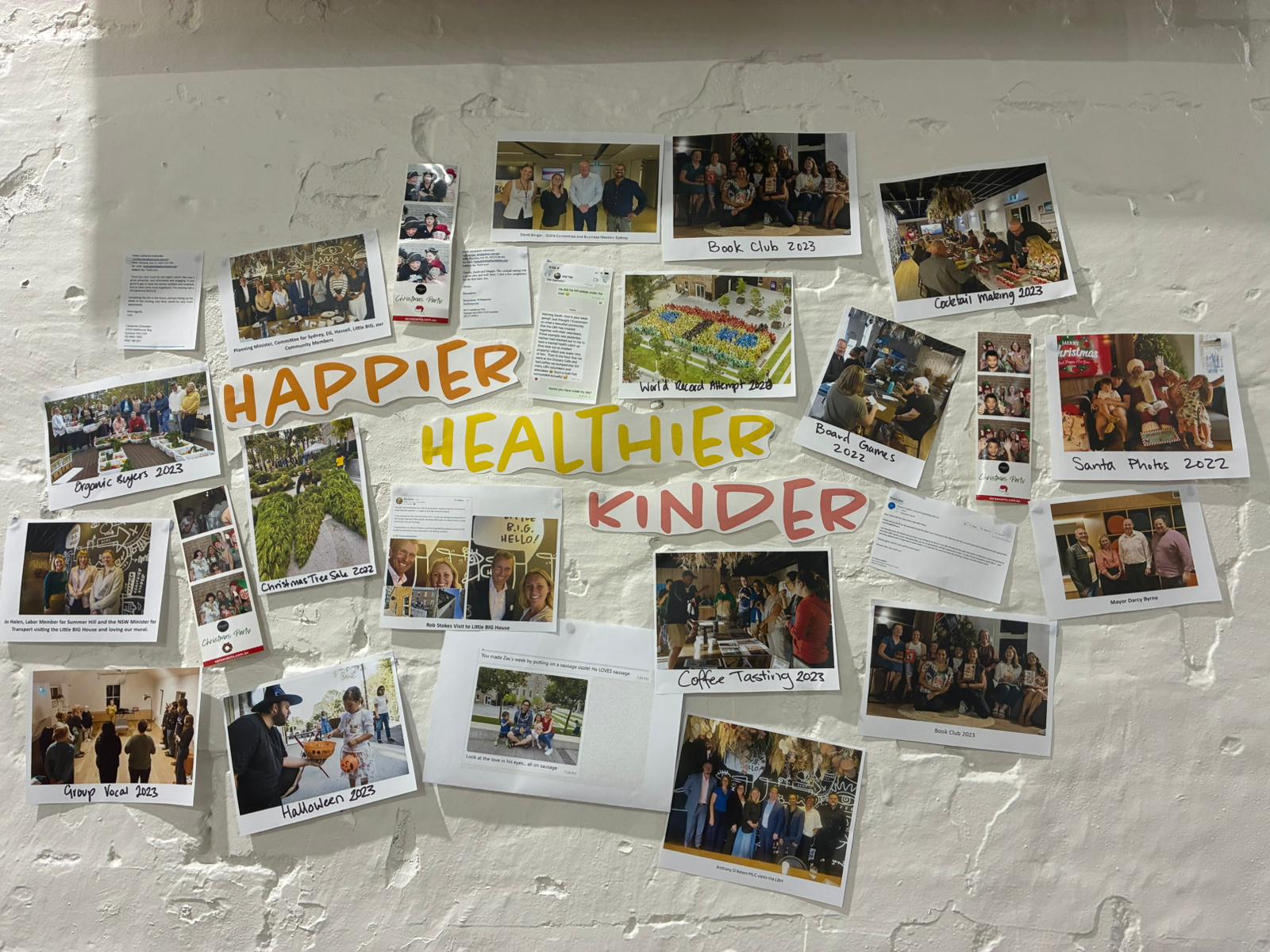Little BIG were invited to give evidence at the NSW Parliamentary Inquiry into the prevalence, causes and impacts of loneliness in New South Wales.
Founding Board Member Holly Reynolds and CEO Sarah Mathews spoke alongside 147 organisations who continue to provide their insights into this social epidemic. Little BIG urged the Government to consider the long-term intentionality that social connection requires. Building homes without community spaces is like building a house without a foundation—it’s unstable.
Read our address below and the full submission here.
Good afternoon everyone,
Thank you for the opportunity to speak with you today. My name is Holly Reynolds, and I am a founding board member of The Little BIG Foundation and I am joined by our CEO Sarah Mathews.
At the heart of our mission is this belief: social connection is the fabric of our society. Connection (the opposite of loneliness) and community are skills to be honed, muscles to be worked for most people. Too many of us lack the opportunity to flex this muscle. We’ve seen the power of connection firsthand in our work at The Little BIG House in Summer Hill, a community hub that we opened in 2021 which hosts over 90 community-led initiatives every month.
The interesting thing about the community space is that it is funded by the property developer, EG, and that it launched post-compilation. Not a sales-strategy, but a true commitment to the social cause of loneliness reduction. This begs the question: why aren’t we incentivizing the creation and support of community spaces to reduce loneliness for all Developers?
We know housing density is growing, and with it comes the risk of isolation—especially for renters, who are more transient by nature. Density doesn’t have to be soulless, but it does need intentional design to create opportunities for connection. This is where planning and collaboration become so important.
Building homes without community spaces is like building a house without a foundation—it’s unstable. Developers, councils, and state departments need to embed community infrastructure into every new development. But it’s not just about creating these spaces—it’s about funding their activation, ensuring they remain vibrant, and supporting the people who will bring them to life.
Connection doesn’t happen by accident—it needs intentionality, and it needs support. I’d like to highlight two key takeaways for our experience:
Spaces matter—but they need to be alive with activity. A leafy park is valuable, not not nearly as valuable as one alive with Saturday sport, birthday parties and walking groups. Likewise a community centre that is a hard-to-access-empty-room does nothing to reduce loneliness.
Locals need support —individuals who want to host book clubs, craft groups, or beer tasting nights are ready to step up. What’s missing is the support to make it easy for them to do so. Traditional community spaces do a great job of servicing structured community groups but they do little to flush out the good neighbours, waiting right next door who want to share their ‘thing’. We achieve this through our community coordinator role, something which needs funding.
We urge the Inquiry to consider strategies that support developers to fund community activation post-completion. To consider density bonuses for developers implementing community-building initiatives and to create guidelines for incorporating loneliness prevention in large-scale residential projects. It cannot be ignored that development disrupts social cohesion, leaving people asking, “Is this still my community? And “Is this somewhere I will feel at home?”
By making it enticing for Developers to support volunteer-driven programs and ensuring spaces for connection, we can give people somewhere to belong, no matter how their neighborhood evolves.
Thank you.



